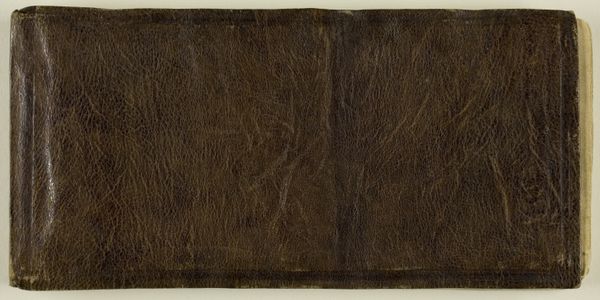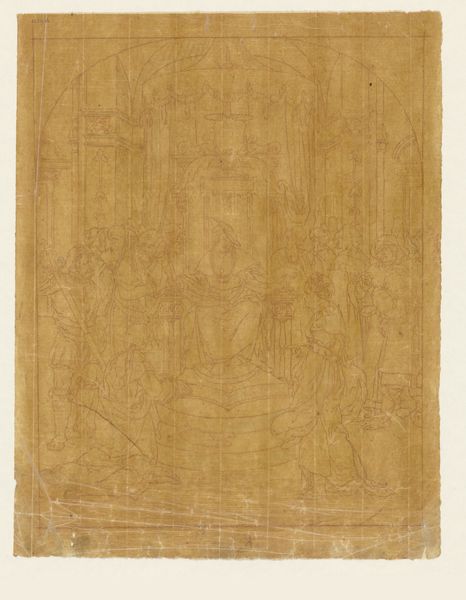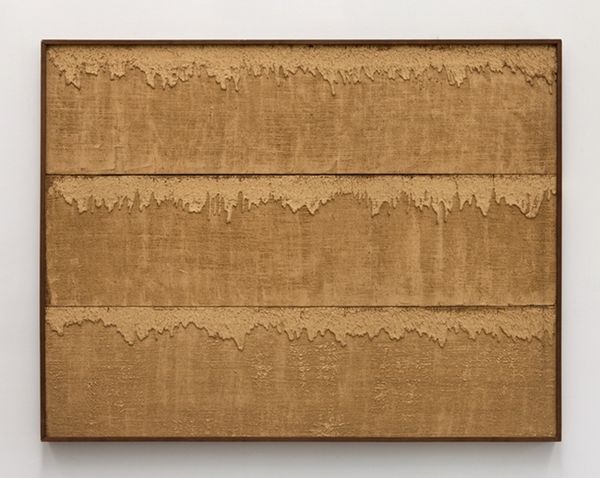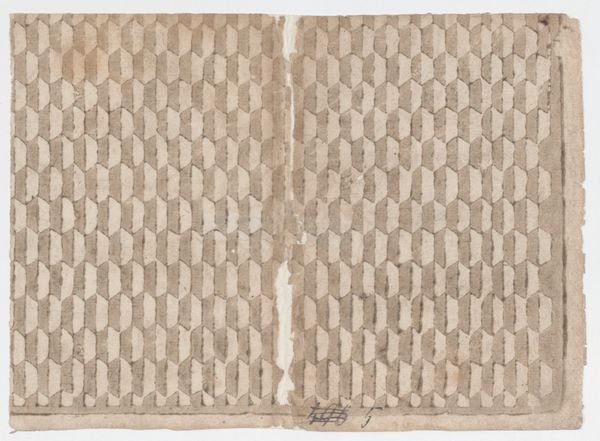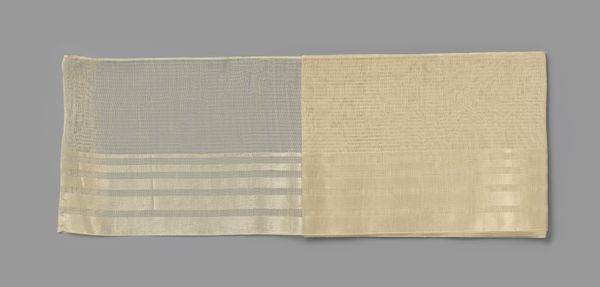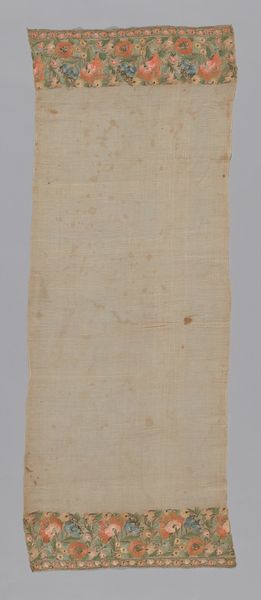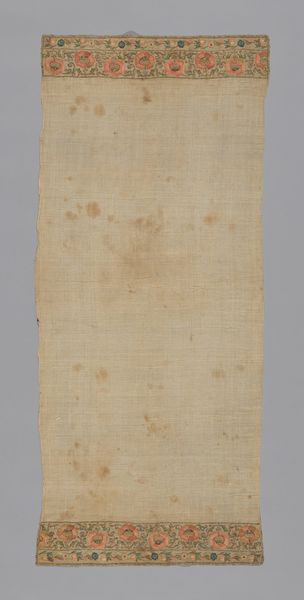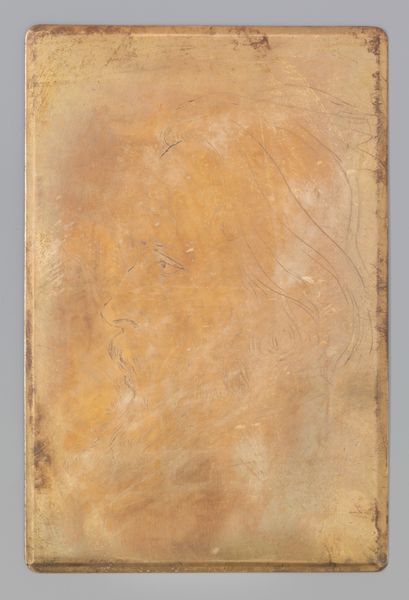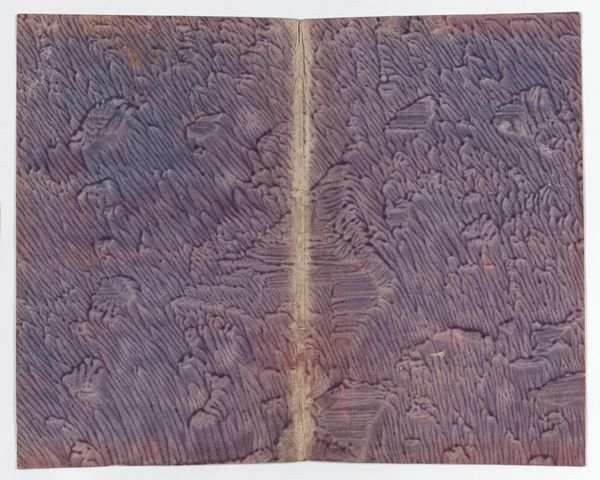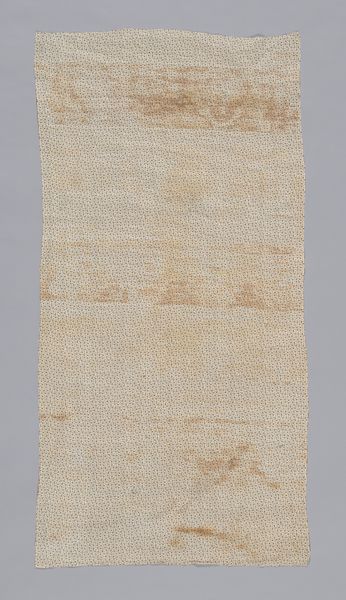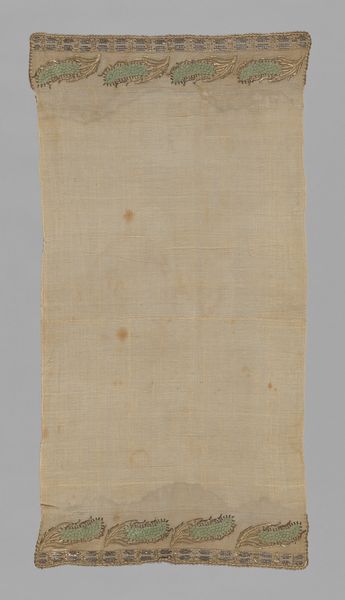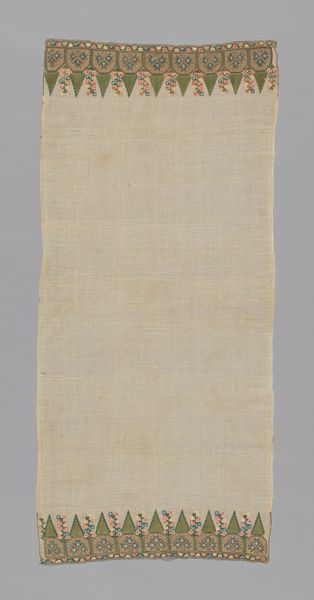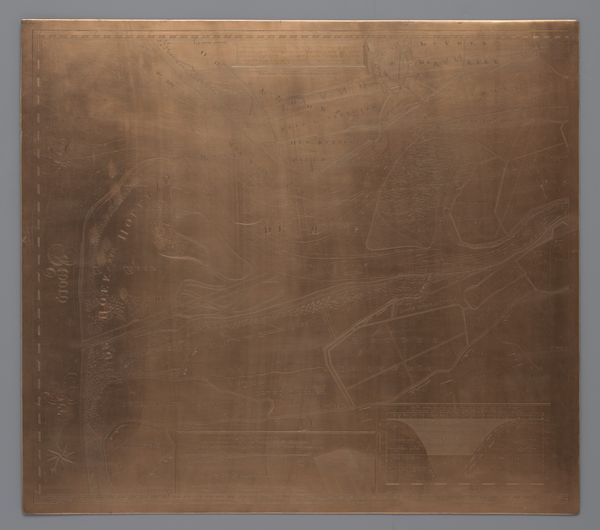
textile
#
art-nouveau
#
textile
#
geometric pattern
#
geometric
Dimensions: width 63.5 cm, height 7 cm, depth 54 cm
Copyright: Rijks Museum: Open Domain
Curator: These "Upholstery of backrests of three chairs," made in 1899 by Theo Nieuwenhuis, offer an intriguing glimpse into the decorative arts of the Art Nouveau period. Editor: My first thought is the texture – it's incredibly tactile just to look at, like a worn velvet or antique brocade. It also strikes me as a really muted triptych in this presentation. Curator: Absolutely. And considering Nieuwenhuis's artistic focus, the materiality here is key. The very choice of textile as the medium, its weave, its color, speaks to a deep engagement with craft. It invites us to consider the labor embedded in creating this geometric pattern. These weren't intended as paintings; they were functional design elements that have entered a new lifecycle in a museum space. Editor: Yes, its shift in location affects its role and reception dramatically. Originally meant to adorn chairs, integrated into a domestic interior, they're now displayed as standalone objects within the formal and perhaps sterile context of a museum. Their presence now prompts questions about the status of decorative arts within the wider cultural conversation. It's fascinating how their socio-cultural role has changed, going from household object to a prized Art Nouveau display. Curator: Indeed. It pushes the boundaries of art, raising questions about consumption and its position within high and low art. Was it meant to democratize aesthetics? Editor: Probably yes. Art Nouveau sought to bring artistry into everyday life. Consider the era's emphasis on mass production. These chair coverings, while undeniably artistic, could conceivably be replicated in some form and enjoyed by a wider public. It blurs the line between a unique piece of art and something industrially reproduced for broader consumption, making the chairs status markers. Curator: Precisely. Studying this artwork allows us to connect with the larger discussions on the manufacturing conditions of such luxury objects in a historical framework. Editor: For me, looking at these three pieces forces a conversation about artistic value, accessibility, and context, highlighting the fascinating way we attribute importance and meaning to objects as they travel through time and the cultural landscape. Curator: For me, I am left thinking of the textiles industry and how material and manufacturing can create works of art with new meanings.
Comments
No comments
Be the first to comment and join the conversation on the ultimate creative platform.

